
Back to Loco of the Month homepage
Back to Sidestreet Bannerworks
.
July 2009
Aster's 0-4-2T Baldwin
by Marc Horovitz

Japan's Kiso Forest was, for a long time, the dominion of the ruling samurai class. Severe penalties were imposed on anyone caught harvesting any of the five species of evergreen native to the forest. When restrictions were finally lifted, wholesale logging began, ultimately resulting in the depletion of the forest. Japan's Ministry of Agriculture had a hand in this. In 1907 they imported a wood-burning Baldwin 0-4-2T and a Shay for testing. The rod engine won and several more were ordered some years later to work in the Kiso Forest. One of these engines has been preserved in the California State Railroad Museum in Sacramento.
The model
Aster's model was produced in two versions that were mechanically identical. The black version was the most common. There was also a version that had an imitation Russia iron boiler, a green cab and tank, and a Ruston stack.
The engine is alcohol fired, with a chicken-feed tank in the bunker feeding a sump behind the rear truck. The boiler is internally fired and has a single, horizontal flue that communicates with the external firebox below the boiler via four upcomers. This proved problematic. The front wick would often go out, leaving the flue to draw in cold air, which was not in the best interests of good performance. Many of these engines were modified, as was the one being reviewed here. Mel Ridley of England made the alterations on this engine. He capped the front burner and plugged the flue above it. He also enlarged the remaining three wicks, modified the firebox, and added a weight between the cylinders to aid performance.
Boiler fittings include a pair of safety valves set to blow at 60 psi, a throttle, a blower, a water glass, a pressure gauge, and a clack valve for filling the boiler from an external source. With this arrangement, the engine can be kept in steam indefinitely. The rear half of the cab roof lifts for access to the controls. The water glass has a rod up the center of the tube, making its reliability questionable.
The engine has two, small, double-acting cylinders with D-valves, controlled by slip eccentrics. The actual pistons are each formed by a pair of small Teflon cups placed back to back on the piston rod. On the front deck is the cap to the lubricator, which is not equipped with a drain.
My example is missing some cosmetics, including the sand lines and the feedwater lines. On the other side of the coin, Mel added some nice looking end beams, steps, and link-and-pin couplers. He also raised the pilot deck to help accommodate the weight, which had the added benefit of making the lubricator less obtrusive.
The run
The only logical way to fill the boiler is to use an Aster trackside pump, which, fortunately, I have. I pumped it up to a reasonable level, then filled the lubricator with steam oil and the tank with alcohol. I popped the fan into the stack, opened the fuel valve, and lit the fire. In a little while pressure was up enough for me to remove the fan and turn on the blower. After this, pressure came up fairly rapidly until blowoff at around 60 psi.
I turned down (but not off) the blower, opened the throttle, and pushed the engine back and forth to clear the condensate in the cylinders. Once the cylinders were hot, it scooted off on its own with a gratifyingly loud exhaust beat. The engine proved a little short of breath, requiring a stop for a blow up every couple of laps. However, it ran well in both directions. Because of its loud exhaust, I could tell just where it was on the railway at all times. It's possible that, with some wick adjusting, the boiler would perform a little better. Or perhaps it just needed a train to sharpen the exhaust and draw the fire better.
Here's a movie of the engine in action. If it doesn't work, click here to go to YouTube.
|
|
|
| Builder | Aster Hobby, Japan |
| Date built | 1980 |
| Gauge | 45 mm |
| Scale | 1:22.5 |
| Boiler | Internally fired |
| Fittings | Safety valves (2), throttle, blower, water glass, pressure gauge, clack valve |
| Fuel | Alcohol (chicken feed) |
| Blow-off pressure | 60 psi |
| Cylinders | Two, double acting, D-valve |
| Reversing gear | Slip eccentrics |
| Lubricator | Displacement |
| Weight | 6 lb., 2 oz. |
| Dimensions | Length, 11-1/8"; width, 4"; height, 5-1/4" |
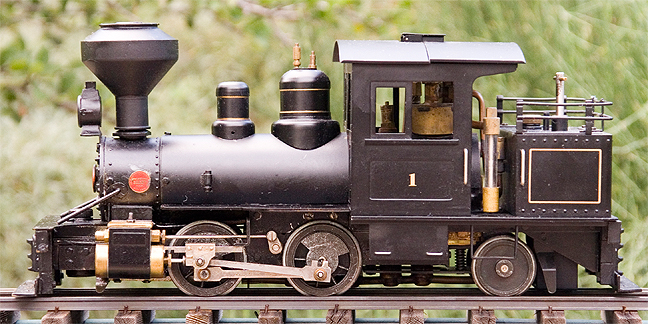

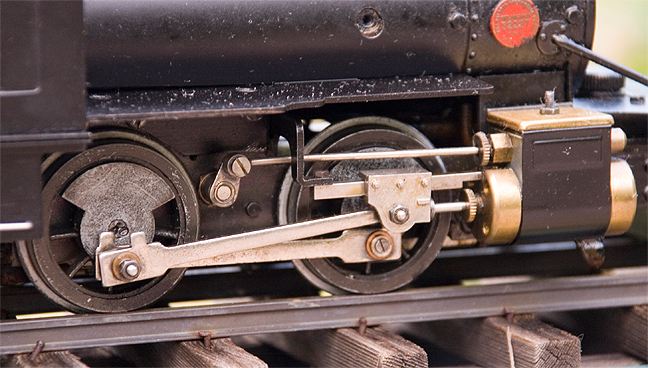

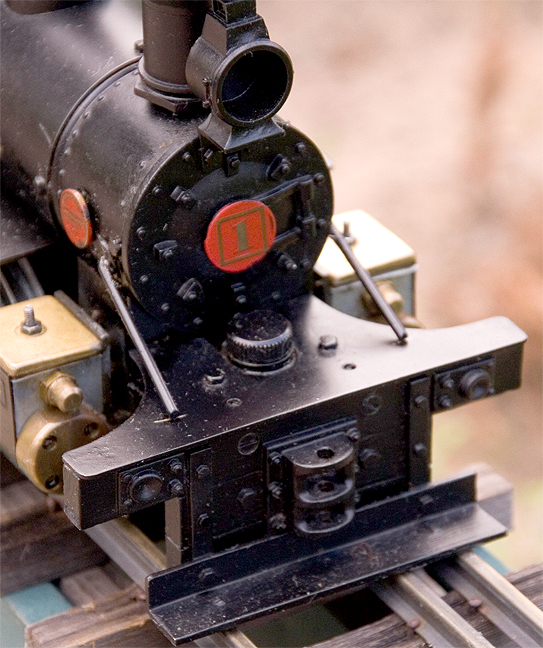
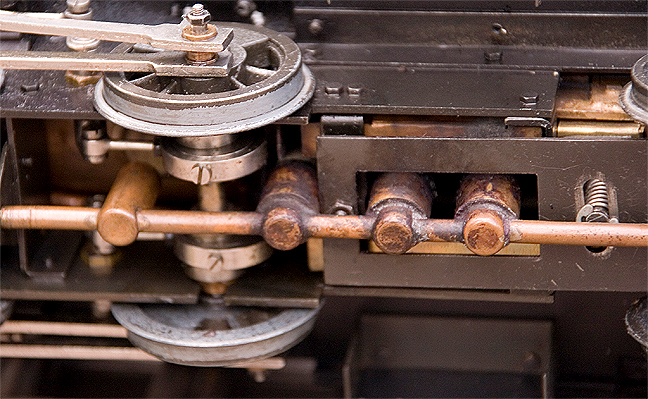
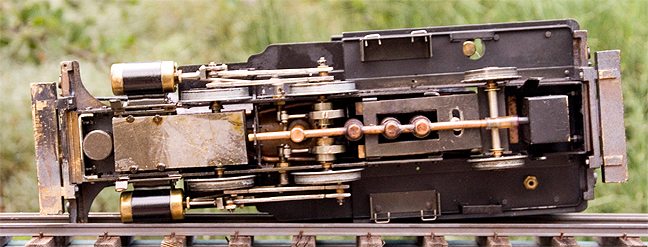
Back to Sidestreet Bannerworks home page
This page and its contents
Copyright Sidestreet Bannerworks, 2009
.